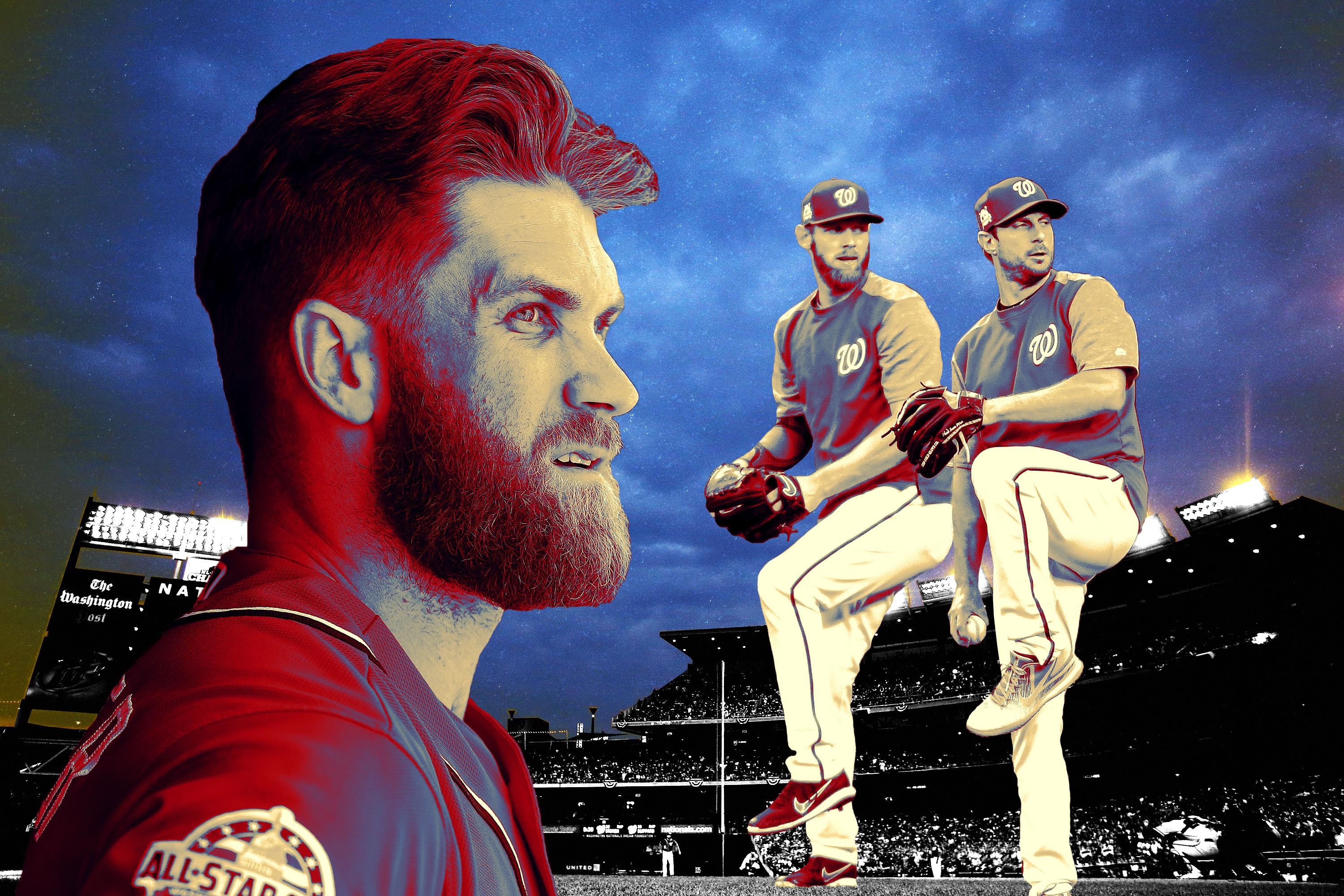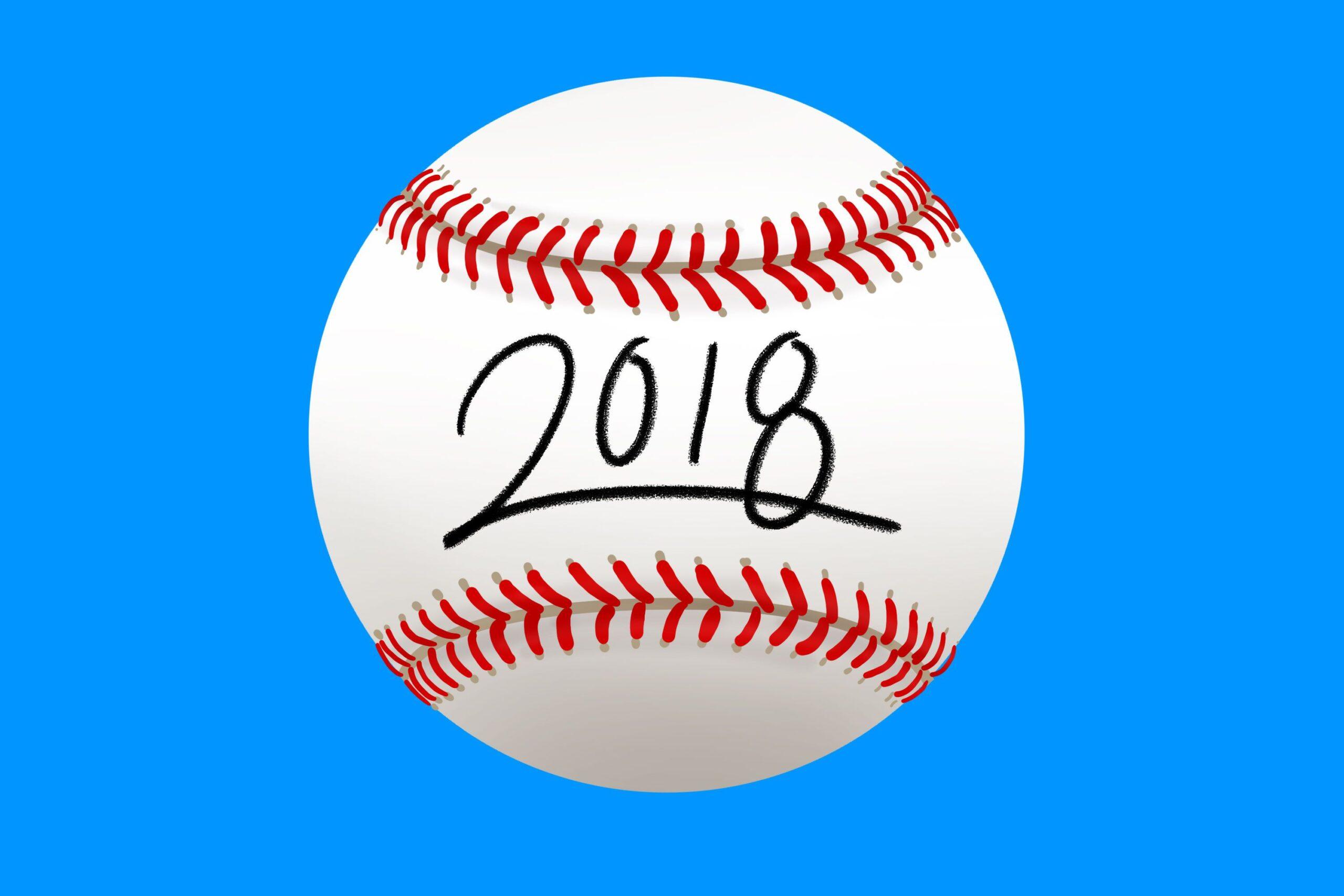
The Nationals have every reason to win it all in 2018. They have Daniel Murphy, who has batted .334 over his two seasons in Washington, and Trea Turner, the speediest child in all of baseball. They have Anthony Rendon, who put up MVP-caliber statistics last year, and center fielder Adam Eaton, who will finally get a chance to shine in Washington after his 2017 ended with a knee injury in April. Then there’s the starting rotation, including perpetually-mid-Dr.-Hyde-transformation Max Scherzer and Stephen Strasburg, the latter of whom put up some of the best numbers of his career last year. The 2018 Nats are projected to win the NL East by seven full games, according to PECOTA; as in so many recent seasons, they’re expected to be a common pick in analysts’ World Series predictions.
Another reason for the Nats to win it all: They have to. Their title window is closing, and it could slam shut even more definitively than it does for most contending teams.
You might have heard about Bryce Harper. The story of Harper this season, basically regardless of what happens—if he supersedes his Ted Williams–esque .330/.460/.649 slash line from 2015; if he perilously tweaks a big toe and spends most of 2018 riding the bench—will be about what happens after this season. Harper is set to join a loaded 2019 free-agent class, and while he might not get quite as mega of a megadeal as he might have before the bottom fell out of the market this offseason, he is all but certain to be courted by just about every team with proximity to a bespoke suit shop. Some sample headlines to get you ready for what lies ahead: (1) Harper [Does Good Thing]—Free-Agency Value Soars; (2) Harper [Does Bad Thing]—Might the Nationals Be Able to Hang on to Him?
You can make the case that Harper will stick around in Washington. The Nats’ owners, famously stingy though they might be, are among the richest in baseball; it’s hard to imagine them not doing all they can to re-sign their biggest star. (Then again, Washington’s quiet winter, which was headlined by signing the 34-year-old Howie Kendrick, does not exactly suggest that this team is really going for it.) And as District defenders are always a little too quick to point out, Harper could actually like his current environs: D.C. might not be the most electric city in the world, fine, but Harper is not exactly the type to seek out nightlife. Perhaps D.C.’s smallness is precisely what someone weighing various millions of dollars a year from now might want: the typical amenities of a major city without the superstar crush that he might find in places that rhyme with Blew Bork.
Nationals fandom is a tricky thing. The Nats are a still-young franchise as they head into their 14th season in our nation’s capital. They left Montreal for a city where baseball diehards had long been claimed by the Baltimore Orioles, and where the transplant- and wonk-heavy population did not exactly lend itself to long-term sporting devotion.
But the Nats have succeeded by most anyone’s metrics. Attendance at Nationals Park was 11th in MLB last year; the team has landed among the top half of the league in attendance in each of the past six seasons. These numbers are helped by an underrated, lovely ballpark in a newly booming neighborhood, a rare example of a stadium making good on its promise of civic reinvigoration. The Nationals have become, at least anecdotally, the uniting fandom of D.C.: You are at least as likely to see that telltale cursive W on a cap around town as the Caps logo or any Dan Snyder–sanctioned imagery.
And yet the team has already, in spite of both its youth and accomplishments, found a way of feeling snakebitten. The Nationals have won the bottom-heavy NL East in three of the past four seasons, and not by shallow margins: they took the division by 17, eight, and then 20 games, respectively. In each of those seasons, the Nats have then gone on to drop the NLDS, losing a crushing Game 5 in each of the last two. Last season, that loss came at the hands of the Cubs, against whom Washington managed to notch an astounding and historical number of own-goals. The team summarily pushed manager Dusty Baker out the door in favor of first-time skipper Dave Martinez. As much as the conventional wisdom says this could be the year the Nats do the thing, it also says this team will find a way to beat itself.
Harper is inextricably tied up with the Nationals’ success—much more so than most other stars and their teams. The 2012 season, which was the first time since the Nats’ 2005 debut that the franchise cracked the top 15 of game attendance, saw him hit 22 home runs and steal 18 bases to take home Rookie of the Year honors. It was also the first time the Nationals surpassed a .500 record, a mark they haven’t slipped below since. In 2015, Harper posted a 10.0 WAR, the sort of Bondsian achievement that already feels unfathomable. The team’s success is only partially a result of Harper’s own accomplishments, of course, but he was, and is, the face of what had until his arrival been a faceless franchise. (Murphy, a cornerstone of the team’s offense over the past two seasons, is set to become a free agent after this season, too.)
There are truisms in baseball that apply most every place other than the Bronx: People are more likely to turn up for teams that win, and all teams go through cyclical ups and downs. Any team that has put up 95 or more wins in four of its past six seasons, as the Nats have, has likely mortgaged some amount of its future; a rebuild will happen eventually for the simple reason that it has to, and when that rebuild is complete however many years from now, the Nats may be as competitive as they are now. (Perhaps they might even be able to advance past the NLDS.)
But rarely has a team’s popular standing felt more tenuous than Washington’s. It is, in short, maybe not just a title window that could be closing—it might be a fandom window, too.


